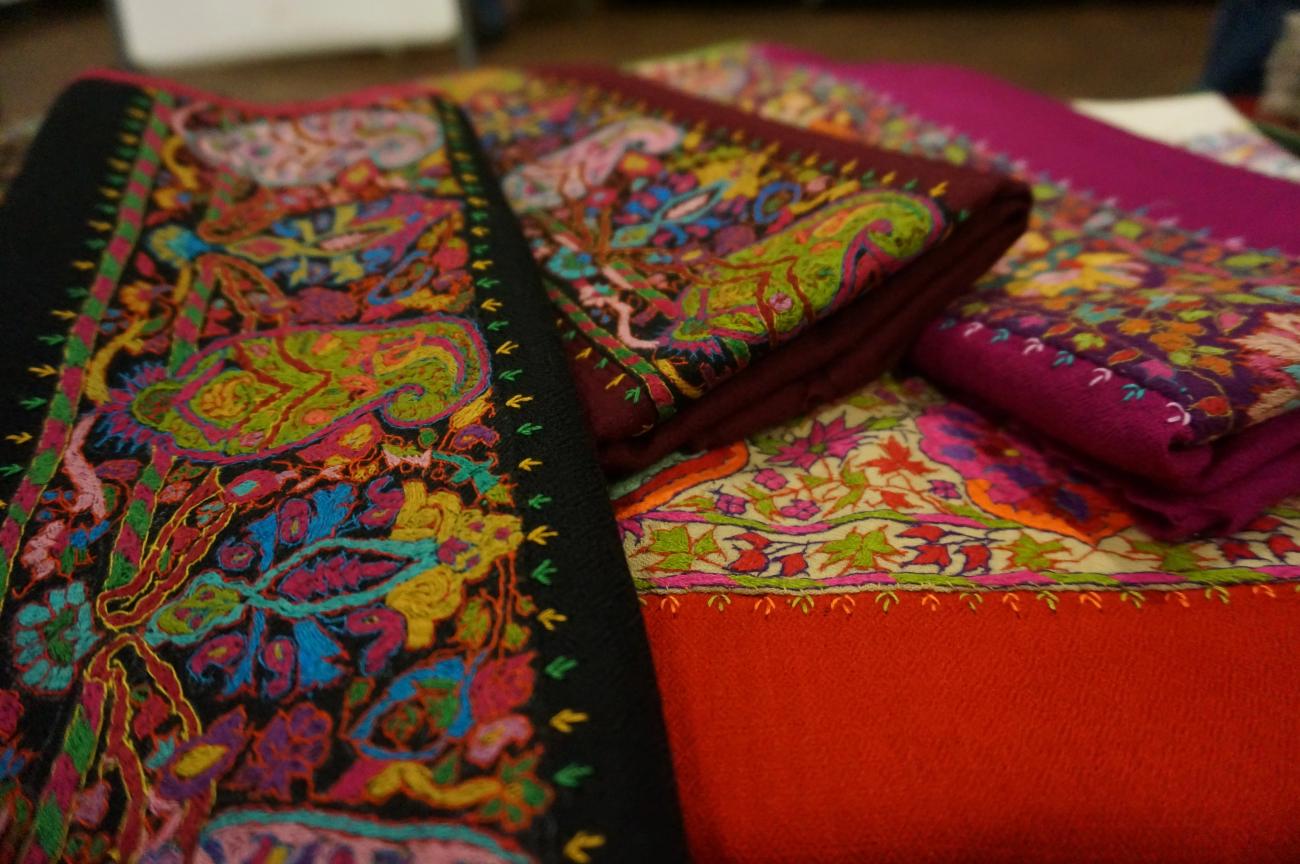
Visit Cultural Survival Bazaar artist Houseofmirs.com to learn how the Indigenous Peoples in Kashmir dream. The “About us” webpage opens with a compelling quote about how “All human beings are also dream beings, (and that) dreaming ties all mankind together.” When the webpage was created in 2023, it reflected a dream to acquaint the world with exquisite handmade textiles from their homelands of the Kashmir Valley—famous for the enchanting, snow-capped Himalayan Mountains, rivers, valleys, flora-filled gardens, and... cashmere.
A family tradition since the 16th century, the Kashmiris have been weaving and embroidering their textile creations with the softest fibers in the world, harvested from the Pashmina wool goat. Akhtar Mir states that some shawls take months to years to finish, with some shawls reflecting a kind of embroidery called Durukha (reversible) that makes the shawl usable on either side and is considered the best example of craftsmanship.
In times of peace and conflict, the House of Mir provides refuge and sanctuary to artisans in the region who desire to earn a living in the textile arts. Each piece moves through their many hands, beginning with the women harvesting fibers that have been naturally shed upon the earth as well as from brushing the goats. The women then clean the fibers and spin the cashmere into luxuriously decadent yarn. The men and women both work, ensuring the yarn is evenly dyed for the men to begin the painstaking task of weaving and embroidering their one-of-a-kind creations.
Often associated with wealth, tradition, and social standing, these pashmina shawls are embroidered with a particular floral design that has been culturally appropriated and renamed… From “Buta,” the traditionally revered representation of fire, life, eternity, good fortune, and the sacred tree of life, to its more widely known colonized label, of paisley. The Buta is more than a popular design, and it is a form of cultural expression that represents the heart of a people fueled by their own desire to live lives free of conflict.
Now, the dream of Mir and his family is for things to go back to the way they were before the border struggle between India and Pakistan. They collectively envision and pray for a time when tourism and trade flourished and the community of artisans thrived. Having one’s homelands and business within the crossroads of a dangerous border dispute also has negative impacts, which are affecting the physical, spiritual, and economic well being of Kashmiri people.
We invite you to support Afra (Mir) Kashmir online at Houseofmirs.com. They are currently offering a 20% discount on all our handcrafted collections. Every purchase helps sustain the tradition and the hands behind it.
Visit House of Mirs in person at the upcoming Cultural Survival Bazaars in Newburyport, MA, on July 19-20; and in Tiverton, RI, on July 25 - 27. Visit bazaar.cs.org for more information.
